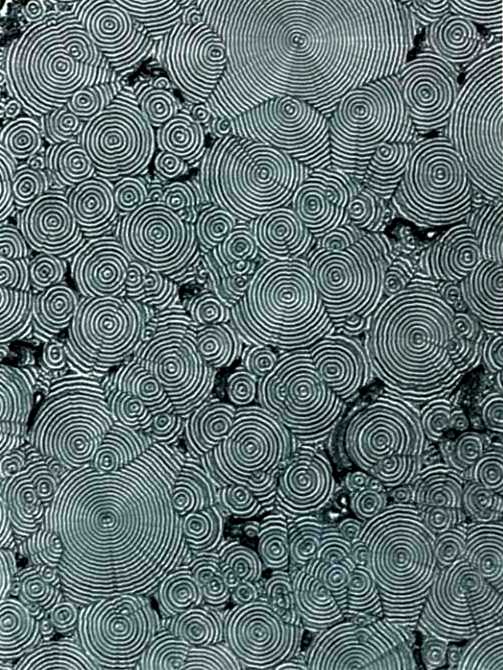 |
 |
How a material freezes is often determined by its supercooling the amount that it is cooled below its freezing point. For instance, when water is frozen at a small supercooling, it can form snowflakes. Many materials (everything from agates to plastics) form patterns called banded spherulites when they are solidified at a large enough supercooling. In order to better understand spherulitic growth, we have been performing careful experiments using a liquid crystalline material known as 10 OCB. This micro scope image shows the result of a not-so-careful experiment when a 10 OCB sample was dropped into a dewar of liquid nitrogen! Notice that the cold temperature caused the material to begin freezing at many points throughout the sample, resulting in many sets of bands. The spherulites that nucleated first had time to grow into the largest patterns before running into neighbouring domains.
This image was photographed with a digital camera attached to a microscope. Magnification: 790X. The band spacing is only 1.9 µm.